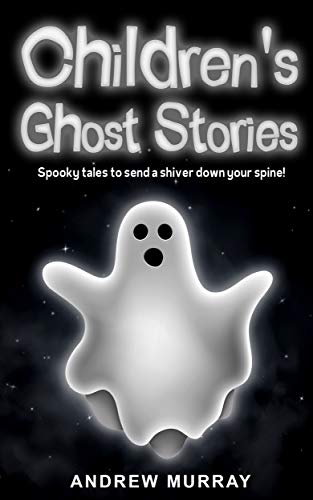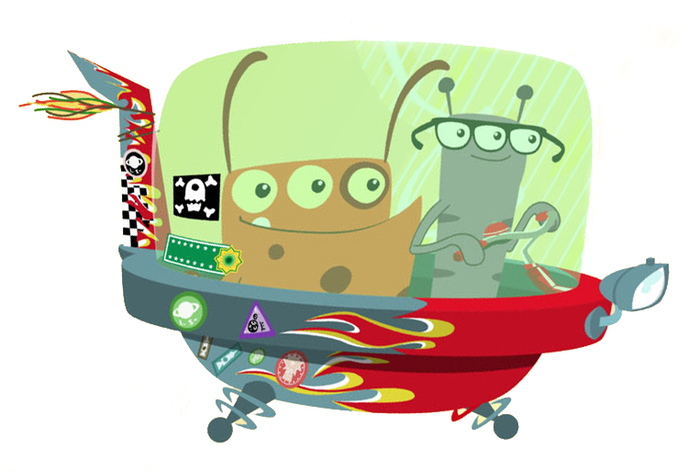
Do you believe in ghosts? Or more to the point, do ghosts believe in you? When you turn in your sleep, do you go creak in the night, and do the ghosts hear you? When you snore in your darkest dreams, do the ghosts hear a mysterious monster and come gathering to see what manner of strange beast is keeping them awake? When you break wind in your sleep, do the ghosts wrinkle their ghostly noses and declare, ‘This is a beast from the stinkiest of swamps - take care!’ When you talk in your sleep, do the ghosts ask, ‘What kind of gibberish gobbledygook is this ghoulish goblin gabbling?’ And do the ghosts gather, closer and closer, jostling to get a good look, peering into your face, poking your spots, picking your nose, lifting your eyelids in the hope, or fear, that you might wake? Who’s more afraid? You or them? I’m just the writer of this book, so leave me out of this. Except the ghosts have asked me to ask you – Please don’t do that thing you did last night. You know, that thing. Because it was horrible. Icky. Yucky. And if you do it again tonight they will take a photo and post it on Ghostagram… Children’s Ghost Stories is a retelling of classic tales by people who were alive when they were alive, and may be ghosts now they are dead. Washington Irving is quite famous, Charles Dickens more famous still. But do their ghosts linger around the world of the living, to see how famous they are now? Do their ghosts care how famous they are now? Between you and me, shhhhh… I bet they do! Children's Ghost Stories is a collection of classic tales by Charles Dickens and Washington Irving retold for modern readers, ghostly jokes, and excerpts from two exciting new series, GHOST RESCUE and FEAR RESCUE, for readers aged 6-9.
Authors

Charles John Huffam Dickens (1812-1870) was a writer and social critic who created some of the world's best-known fictional characters and is regarded as the greatest novelist of the Victorian era. His works enjoyed unprecedented popularity during his lifetime, and by the twentieth century critics and scholars had recognised him as a literary genius. His novels and short stories enjoy lasting popularity. Dickens left school to work in a factory when his father was incarcerated in a debtors' prison. Despite his lack of formal education, he edited a weekly journal for 20 years, wrote 15 novels, five novellas, hundreds of short stories and non-fiction articles, lectured and performed extensively, was an indefatigable letter writer, and campaigned vigorously for children's rights, education, and other social reforms. Dickens was regarded as the literary colossus of his age. His 1843 novella, A Christmas Carol, remains popular and continues to inspire adaptations in every artistic genre. Oliver Twist and Great Expectations are also frequently adapted, and, like many of his novels, evoke images of early Victorian London. His 1859 novel, A Tale of Two Cities, set in London and Paris, is his best-known work of historical fiction. Dickens' creative genius has been praised by fellow writers—from Leo Tolstoy to George Orwell and G. K. Chesterton—for its realism, comedy, prose style, unique characterisations, and social criticism. On the other hand, Oscar Wilde, Henry James, and Virginia Woolf complained of a lack of psychological depth, loose writing, and a vein of saccharine sentimentalism. The term Dickensian is used to describe something that is reminiscent of Dickens and his writings, such as poor social conditions or comically repulsive characters. On 8 June 1870, Dickens suffered another stroke at his home after a full day's work on Edwin Drood. He never regained consciousness, and the next day he died at Gad's Hill Place. Contrary to his wish to be buried at Rochester Cathedral "in an inexpensive, unostentatious, and strictly private manner," he was laid to rest in the Poets' Corner of Westminster Abbey. A printed epitaph circulated at the time of the funeral reads: "To the Memory of Charles Dickens (England's most popular author) who died at his residence, Higham, near Rochester, Kent, 9 June 1870, aged 58 years. He was a sympathiser with the poor, the suffering, and the oppressed; and by his death, one of England's greatest writers is lost to the world." His last words were: "On the ground", in response to his sister-in-law Georgina's request that he lie down. (from Wikipedia)

People remember American writer Washington Irving for the stories " Rip Van Winkle " and " The Legend of Sleepy Hollow ," contained in The Sketch Book (1820). This author, essayist, biographer and historian of the early 19th century wrote newspaper articles under the pseudonym Jonathan Oldstyle to begin his literary career at the age of nineteen years. In 1809, he published The History of New York under his most popular public persona, Diedrich Knickerbocker. Historical works of Irving include a five volume biography of George Washington (after whom he was named) as well as biographies of Oliver Goldsmith, Muhammad, and several histories, dealing with subjects, such as Christopher Columbus, the Moors, and the Alhambra, of 15th-century Spain. John Tyler, president, appointed Irving to serve as the first Spanish speaking United States minister to Spain from 1842 to 1846.

Librarian Note: There is more than one author in the GoodReads database with this name. See this thread for more information. Andrew Murray is a writer of (mostly) children's books who lives in London. His friends think he has too many weird ideas and eats too much cheese. Andrew likes stormy nights, and books about long ago and faraway places. He likes cats too, as long as they don't leave hairs on his cheese. Buddy and Elvis is in television development with London's Illuminated Films and Toronto's Comet Entertainment. Fear Rescue, the first book in a spine-tingling new series for readers aged 7-10, is available for free download from www.andrewmurray.info Sherlock - Prisoner 221B is the first installment in the Sherlock Darkly series of mystery thrillers for readers aged 9-12.